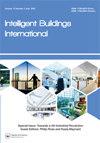Diffusion patterns and drivers of higher-rated green buildings in the Mumbai region, India: a developing economy perspective
IF 1.7
Q2 CONSTRUCTION & BUILDING TECHNOLOGY
引用次数: 3
Abstract
ABSTRACT Urban growth and extensive construction in the cities of developing countries raise questions about environmental pollution and resource challenges, along with sustainable techniques to mitigate them. Research in developed economies has concluded that sustainable construction practices and certifications like Leadership in Energy and Environmental Design (LEED) can help to reduce these effects at a regional level. Metropolitan areas in developing countries, such as the Mumbai region, have had LEED-certified buildings for over a decade, but their drivers and diffusion patterns have not been studied. A regression analysis on the Mumbai's dataset of LEED-certified buildings endorsed diffusion pattern different than hierarchical diffusion of developed economies. Green buildings in the peripheral business district of Navi Mumbai are certified at higher levels than those in the central business district (CBD). Higher-level green buildings in planned outer business districts are attracting tenants from the CBD to Navi Mumbai, especially those in sectors with intensive human-capital needs. The driver for tenants demanding higher-level green buildings is the signalling benefits associated with green buildings. The results establish a linkage between occupant priorities and the type of credits emphasised in the LEED certification process. Mumbai’s higher-rated green buildings have primarily pursued credits from LEED’s Energy and Atmosphere category, signalling superior efficiency.印度孟买地区高评级绿色建筑的扩散模式和驱动因素:一个发展中经济体的视角
发展中国家的城市增长和大规模建设提出了环境污染和资源挑战的问题,同时也提出了缓解这些问题的可持续技术。发达经济体的研究已经得出结论,可持续建筑实践和认证,如能源与环境设计领导力(LEED),可以帮助在区域层面上减少这些影响。发展中国家的大都市区,如孟买地区,十多年来一直有leed认证的建筑,但它们的驱动因素和扩散模式尚未得到研究。对孟买leed认证建筑数据集的回归分析表明,这种扩散模式不同于发达经济体的分层扩散模式。新孟买周边商务区的绿色建筑比中央商务区(CBD)的绿色建筑认证水平更高。规划中的外商业区的高层绿色建筑正吸引着从中央商务区到新孟买的租户,尤其是那些需要大量人力资本的行业。租户要求更高层次的绿色建筑的驱动力是绿色建筑带来的信号效益。结果建立了居住者优先级和LEED认证过程中强调的学分类型之间的联系。孟买评级较高的绿色建筑主要追求LEED的能源和大气类别的学分,这表明效率更高。
本文章由计算机程序翻译,如有差异,请以英文原文为准。
求助全文
约1分钟内获得全文
求助全文
来源期刊

Intelligent Buildings International
CONSTRUCTION & BUILDING TECHNOLOGY-
CiteScore
4.60
自引率
4.30%
发文量
8
 求助内容:
求助内容: 应助结果提醒方式:
应助结果提醒方式:


